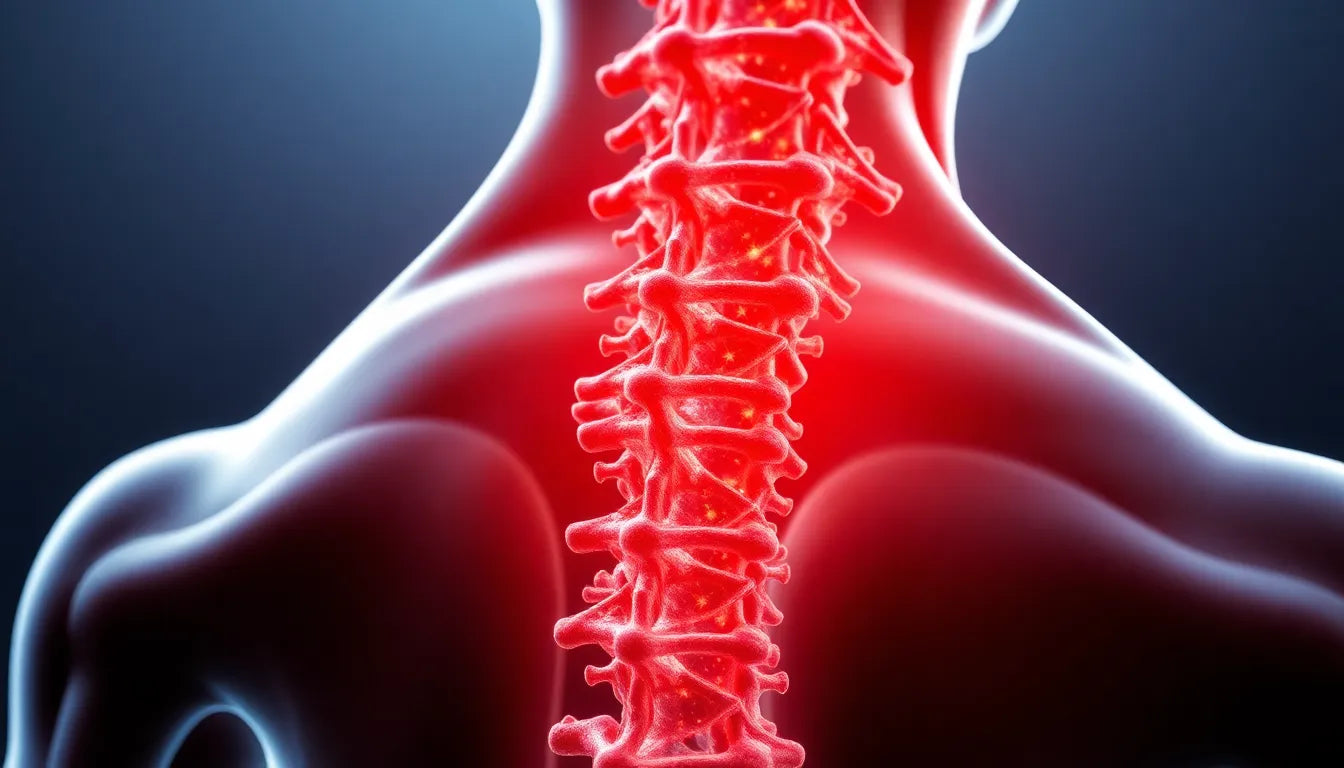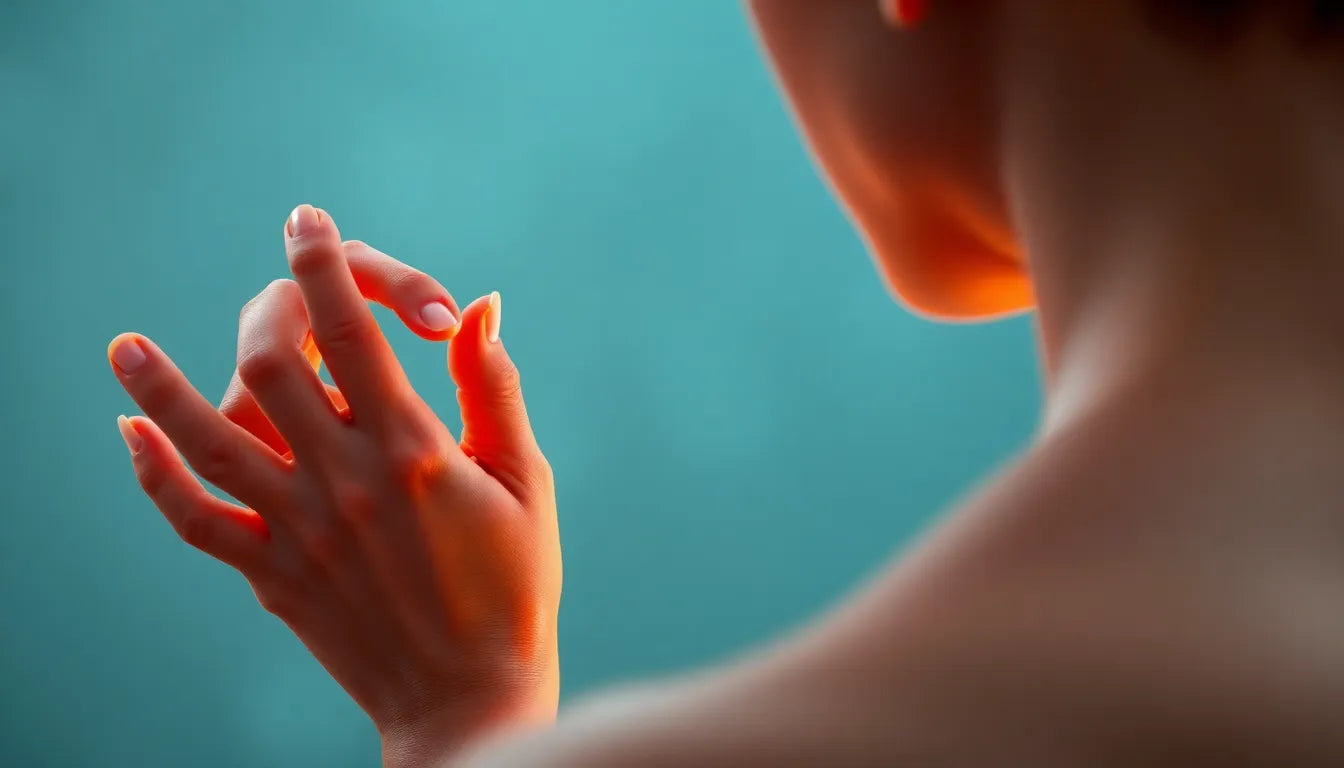A herniated disc in the lower back is a common condition that affects many individuals, often leading to discomfort and mobility issues. This condition occurs when the soft, gel-like center of a spinal disc pushes through a crack in its tougher exterior casing. The lumbar region, or lower back, is particularly susceptible to this issue due to the significant amount of pressure it bears from daily activities and movements. As a result, herniated discs in this area are quite prevalent and can cause a range of symptoms.
Common symptoms associated with a herniated disc in the lower back include persistent pain, numbness, and weakness that can extend into the legs and feet. These symptoms arise because the protruding disc material can irritate or compress nearby nerves, leading to discomfort that can significantly impact one's quality of life. Understanding the nature of a herniated disc is crucial for effective management and relief, as it enables individuals to seek appropriate treatment and make informed decisions about their health.
importance of seeking information and treatment
Gaining accurate information and pursuing suitable treatment for a herniated disc in the lower back is vital. Without proper intervention, the condition can lead to chronic pain and reduced mobility, affecting daily activities and overall well-being. It's essential to recognize the potential long-term impact of an untreated herniated disc, which can include ongoing discomfort and even permanent nerve damage in severe cases.
By seeking information from reliable sources and consulting healthcare professionals, individuals can better understand their condition and explore various treatment options. This proactive approach not only helps in managing symptoms effectively but also aids in preventing further complications. As we delve deeper into the medical explanations and treatment possibilities for herniated discs, it becomes evident that knowledge is a powerful tool in achieving relief and maintaining a healthy, active lifestyle.
medical explanations and diagnostic procedures
Understanding the mechanics of a herniated disc in the lower back requires a closer look at the anatomy of the lumbar spine. The lumbar region is composed of five vertebrae, cushioned by intervertebral discs that act as shock absorbers. These discs have a tough outer layer called the annulus fibrosus and a soft inner core known as the nucleus pulposus. A herniated disc occurs when the nucleus pulposus pushes through a tear in the annulus fibrosus, often due to wear and tear or sudden injury. This protrusion can compress nerve roots, leading to the painful symptoms associated with this condition.
The spinal canal houses the spinal cord and nerve roots, which are crucial for transmitting signals between the brain and the rest of the body. When a disc herniates, it can impinge on these nerve structures, causing symptoms such as pain, numbness, and weakness, particularly in the lower back and legs. Understanding this interaction is essential for diagnosing and managing a herniated disc effectively.
To confirm the presence of a herniated disc, medical professionals often rely on diagnostic imaging techniques. Magnetic Resonance Imaging (MRI) is the most common tool used, as it provides detailed images of soft tissues, including discs and nerves. Computed Tomography (CT) scans may also be utilized to assess the extent of the herniation and its impact on surrounding structures. These diagnostic procedures are invaluable for evaluating the severity of the condition and formulating a tailored treatment plan.
treatment options and recovery
When it comes to treating a herniated disc in the lower back, non-surgical options are often the first line of defense. Non-surgical decompression (NSD) therapy is a popular choice, offering relief by gently stretching the spine to reduce pressure on the affected disc and nerves. This method has shown promising results in alleviating pain and improving mobility without the need for invasive procedures.
Physical therapy plays a vital role in the recovery process, focusing on strengthening the muscles surrounding the spine to provide better support and reduce strain on the discs. Techniques such as stretching, strengthening exercises, and posture correction are commonly employed to enhance recovery. Chiropractic care may also be beneficial, as spinal adjustments can help realign the vertebrae and relieve pressure on the nerves.
Pain management strategies, including medication and epidural steroid injections, can provide temporary relief while other treatments take effect. These interventions aim to reduce inflammation and alleviate discomfort, allowing patients to engage more fully in physical therapy and other rehabilitative activities.
Interestingly, some studies suggest that herniated discs can spontaneously resorb over time, meaning the body can naturally reduce the size of the herniation. Factors influencing this process include the body's immune response and the disc's composition. Engaging in regular exercise, maintaining a healthy weight, and avoiding activities that exacerbate symptoms can support this natural healing process.
comparison of surgical and non-surgical treatments
| Treatment Type | Benefits | Risks | Recovery Time |
|---|---|---|---|
| Non-Surgical (NSD, Physical Therapy) | Non-invasive, minimal downtime, promotes natural healing | May require ongoing sessions, gradual improvement | Weeks to months |
| Surgical (Microdiscectomy) | Immediate relief for severe cases, high success rate | Infection, nerve damage, longer recovery | Several weeks |
Choosing between surgical and non-surgical treatments depends on the severity of the herniated disc and the patient's overall health. Non-surgical options are typically preferred for mild to moderate cases, while surgery may be necessary for those with significant nerve compression or when conservative treatments fail to provide relief. Understanding these options allows individuals to make informed decisions about their care and work towards a pain-free future.
Surgical interventions for herniated discs
In cases where non-surgical treatments do not provide sufficient relief, or when symptoms are severe, surgical intervention may be necessary. One of the most common surgical procedures for a herniated disc in the lower back is microdiscectomy. This minimally invasive surgery involves the removal of the herniated portion of the disc, which alleviates pressure on the affected nerve roots. Microdiscectomy is known for its high success rate in reducing pain and improving function, making it a preferred choice for many patients with significant nerve compression.
Post-surgical recovery typically involves a period of rehabilitation, which may include physical therapy to strengthen the back muscles and improve flexibility. Following surgery, patients are often advised to avoid heavy lifting and strenuous activities for several weeks to allow the spine to heal properly. While surgical interventions can provide immediate relief from symptoms, they also come with risks such as infection, nerve damage, and the potential for recurrent disc herniation.
Ergonomic aids and lifestyle adjustments
For those managing a herniated disc in the lower back, incorporating ergonomic aids and lifestyle adjustments can play a significant role in alleviating symptoms and preventing further injury. Ergonomic aids, such as lumbar support cushions and adjustable chairs, help maintain proper posture and reduce strain on the lower back during daily activities. These tools are particularly beneficial for individuals who spend extended periods sitting or performing repetitive tasks.
In addition to ergonomic aids, making lifestyle adjustments can contribute to long-term relief and recovery. Regular exercise, such as walking, swimming, or yoga, helps strengthen the muscles that support the spine and improve overall flexibility. Maintaining a healthy weight is also crucial, as excess body weight can increase pressure on the spinal discs and exacerbate symptoms. Furthermore, adopting proper lifting techniques and avoiding activities that involve twisting or bending at the waist can help prevent further disc injury.
Frequently Asked Questions
What are the symptoms of a herniated disc in the lower back?
Common symptoms include pain, tingling, and muscle weakness in the lower back and legs, often resulting from nerve compression.
How is a herniated disc diagnosed?
A herniated disc is typically diagnosed through imaging tests such as MRI or CT scans, along with a physical examination by a healthcare professional.
What are the non-surgical treatment options?
Non-surgical treatments include physical therapy, chiropractic care, non-surgical decompression therapy, and pain management strategies.
When is surgery necessary for a herniated disc?
Surgery is generally considered when conservative treatments fail to alleviate symptoms, or when there is significant nerve damage or loss of function.
Can lifestyle changes help with recovery?
Yes, lifestyle changes such as regular exercise, ergonomic adjustments, and weight management can aid in recovery and help prevent recurrence of herniated disc symptoms.
Understanding the various treatment options and making informed decisions about care can significantly impact the quality of life for those dealing with a herniated disc in the lower back. By combining medical interventions with lifestyle adjustments, individuals can work towards achieving relief and maintaining a healthy, active lifestyle.
Sources
- "Lumbar Disc Herniation." The Radiology Assistant.
- "SERP Analysis." SEMrush Blog.
- "Reduction of Herniated Disc Size through Treatments." Journal of Parker University.
- "SERP Analysis: Understanding Search Results." Victorious Blog.
- "Prevalence, Clinical Predictors, and Mechanisms of Resorption in Lumbar Disc Herniation: A Systematic Review." Orthopedic Reviews.


















